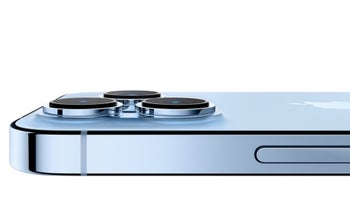
Many new handsets feature displays that refresh up to 120 times per second. You can imagine just how much battery life must be consumed in order to power such a feature. Some Android phones use variable refresh rates based on the content that appears on the screen.
Applications that can benefit from the higher refresh rate, such as games, will update on the screen at 120Hz; other apps that don’t benefit from the faster refresh rate, like texting, for example, will reduce the refresh rate to a much lower number. In other words, the refresh rate is based on the app being used.
Apple uses the speed of the user’s finger to determine the speed of the variable refresh rate
And when Apple introduced the ProMotion screen for the iPhone 13 Pro and iPhone 13 Pro Max this year, it not only made the refresh rate variable based on the app being used, it added the speed of the user’s finger on the display as another variable used to determine the refresh rate being applied by the phone.
According to Inc., the refresh rate on the ProMotion display will drop down to 10Hz if you’re reading a tweet on the iPhone 13 display. If you start to scroll slowly, the refresh rate might rise to 60Hz. Scroll faster and the screen will update 90 to 120 times a second. Again, the refresh rate on the iPhone 13 Pro models is dependent on the speed of your finger on the glass.
So the ProMotion screen on the iPhone 13 Pro models not only changes the refresh rate based on the app that is being used, but it also changes the refresh rate based on how the app is being used. This allows Apple to offer a 120Hz refresh rate on its latest “Pro” models without backtracking on the fabulous battery life that the 2021 iPhone models feature thanks to the larger battery capacities being used.
The LTPO backpanel also helps Apple offer a variable refresh rate on the new “Pro” models
Also helping Apple with its variable refresh rate is the LTPO backplane. This technology was created by Apple and is used on some Android phones and the Apple Watch. Thanks to LTPO, the ProMotion screen can achieve what Apple marketing chief Greg Joswiak said during last month’s California Streaming event. Joswiak said that ProMotion “produces fast frame rates when you need them and preserves battery life when you don’t.”
Apple iPhone 13 Pro and iPhone 13 Pro Max users can enjoy buttery smooth scrolling and improved video game animation without worrying that they might have to start looking for an outlet to plug their phone into by the time the evening comes around. Thanks to the additional variable of measuring the user’s finger speed, the latest iPhone models might arguably be the best at offering users the advantages of having a screen that updates up to 120 times per second without consuming too much battery life.
Apple has a habit of debuting something on its most premium phones and then offering it on the entire line the following year. If this trend continues with the ProMotion 120Hz refresh rate display, there is a possibility that the 2022 iPhone 14 and iPhone 14 Max could bring the smoother scrolling and animation to lower priced iPhone models. Whether this is possible might be dependent on the battery life that Apple gives those two new handsets next year.
According to Bloomberg’s Mark Gurman, the iPhone 14 line is going to be totally redesigned which means that just about everything is up in the air at the moment. the only thing we can feel comfortable about are the four models expected in 2022: the iPhone 14, iPhone 14 Max, iPhone 14 Pro and iPhone 14 Pro Max.


